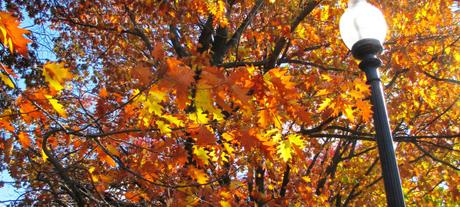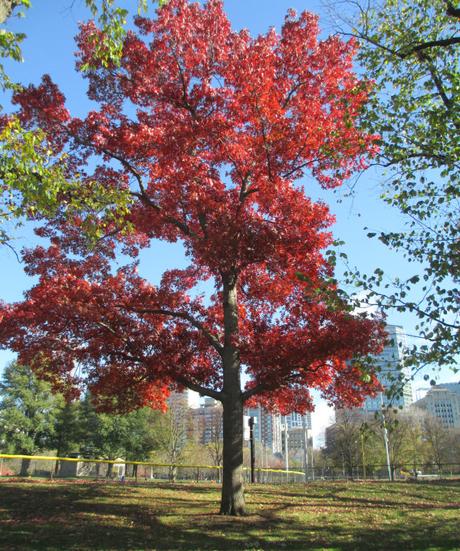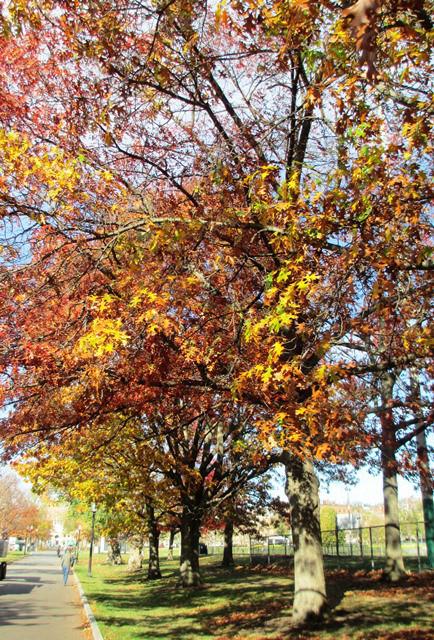For November our Tree of the Month is the Oak, one of only a few local trees to be the last to lose its leaves. Well into the winter season, Bostonians will be able to look up at shivering branches almost uncannily cloaked with tenacious brown oak leaves.

Oaks are an astoundingly diverse group of trees - there are 600 species all over the world, and 90 species in North America. These mostly deciduous trees hybridize easily and are sometimes difficult to identify. The wood of oaks, as well as their acorns, is high in a type of polyphenol called tannin-the source of its strength, resistance to rot and insects, and the flavor oak barrels can impart to their contents (well known to lovers of "buttery" chardonnay).
Here on the Boston Common and in the Public Garden, Pin Oaks, Red Oaks, and White Oaks are among the largest trees. The Commonwealth Avenue Mall has over 30 specimens and four species of oaks, the Garden over 20 specimens and seven species, and the Common over 50 specimens and five species.

The tree fruit-mostly acorns-carpeting the forest floor this time of year is collectively called "mast", from the same Old English word ("maest") that gave us the word "meat." Bumper acorn crop years are called "mast years" and are directly associated with huge fluctuations in wildlife populations, which can then have ripple effects on populations of other creatures like ticks that feed on oak-dependent wildlife such as mice and deer.
Early humans all over the globe ate acorns, after processing them in various ways (soaking, drying, etc). Until relatively recently in human history, acorns were a significant source of calories for humanity - by some estimates up to 10 percent.
When Europeans came to North America, the old growth oak forests here were an attractive natural resource, as oak was an important building material that had been mostly exhausted in Europe. Oak was used in shipbuilding, quarter sawn for oak furniture, and prized for barreling wine and spirits. The old-growth White Oak planks of the USS Constitution withstood so many English shells that the sailors nicknamed it "Old Ironsides."
Oak forests still thrive in Southern New England, and are characterized by dry, sandy soils, other fire adapted plants such as blueberry bushes and various pine species, and hickory species. On Cape Cod, Martha's Vineyard, and Nantucket, the familiar low twisty maritime forests are also dominated by fire adapted oaks and their associated understory species and pollinators, some of which are rare and endangered species of moths and butterflies.

In some parts of New England, oaks face a new kind of threat - overgrazing by deer. Without many predators, deer populations have exploded in New England, and excessive browse of oak seedlings and saplings by deer is exerting pressure on successional change in the forested landscape.
As you walk through our three parks, look for urban wildlife feeding on acorns-squirrels are ubiquitous, of course, but you might also see crows, jays, ducks, geese, raccoons, opossums, and perhaps even foxes. Then take a moment to look up at the familiar lobed leaves that not so long ago shaded us on those hot summer days. We have so many reasons to feel grateful to the oak!
Forget to read last month's tree, the Dawn Redwood? Read it here!

Claire Corcoran is an ecologist and member of the Friends of the Public Garden Board of Directors. She is a self proclaimed "tree hugger" and dedicated advocate for greenspace in Boston and beyond. Claire lives in the South End of Boston with her husband and three children.
